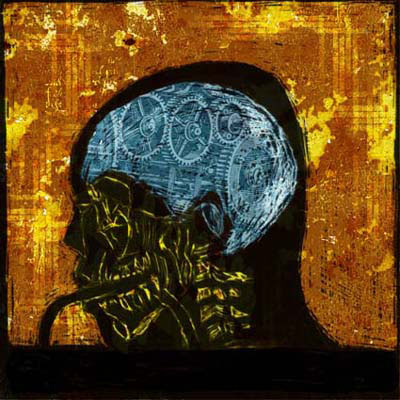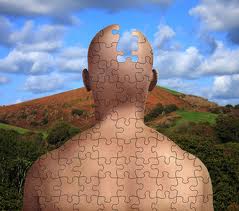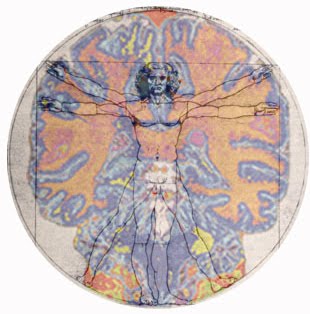The neuroscience of psychotherapy - talking to the ghost in the machine.

Supine on a therapist's couch it is all too easy to wonder about the machine whirring away inside the head of the person sat opposite. Is there, as Ryle noted sometime ago, a ghost inside the machine that runs in parallel with every fired neuron? Or is consciousness an attribute of quantum events in the brain? And what happens when the electrons start to misbehave and a neurotransmitter malfunctions? The therapist machine looks at the analysand machine and computes a system error, something amiss, something awry, a behaviour not quite understandable, an action not sufficiently regular, a semantic tic not noticeably normal. And then, on observing a dissonance, the therapist machine attempts some words of wisdom with which to heal the machine opposite. A piece of verbal duct tape to place over the afflicted area. An utterance to usher in a change.
Language is the sole instrument of psychoanalytic surgery, it is the distinction between matter and spirit, the means by which we develop theories and articulate our observations, and, rather awkwardly, it is the source of what neuroscientists recognise to be the "hard problem" of their discipline. The hard problem is largely the problem I outlined above, it is the problem of objective brain events and the subjective qualia of experience. Dual aspect monism, also known as perspectivism, is neuroscience's answer to the problem, and is simply a way of saying that there are many ways to view the same phenomenon.
Dual aspect monism recognises brain activity to be the primary place in which mental events and bodily acts originate. The brain is a high functioning cellular machine in this sense; it processes neurochemicals, transports ions, blocks and allows ozmotic exchange. We can observe the machine doing all these things and more, and we can draw conclusions about them. On the other hand, however, the very same processes can be observed by looking at the phenomenon that they cause, the behaviours described in the DSM-IV or those of everyday life. This is the way of neuro-psychoanalysis.

Bridging the gap between the two disciplines neuropsychoanalysis takes the insights from one discipline to explain the phenomenon in another. What very often results is a conversation that re-imagines the explanations of old. So, for instance, Freud's theory of libido would be re-framed as a dopaminergic system, and his theory of trauma and repression would be explained as the result of hormones shutting off the retranscribing action of the hippocampus. The therapeutic value of the analyst's couch is not lost in this process of elaboration, as the subjective experience remains at the forefront of the encounter, however sufficient gains are made by being able to explain thought and behaviour as a bodily process.
Other reinterpretations of therapeutic theory include:
- Emotional and unconscious thinking is based in the limbic system of the brain, which has a greater processing capability than the area responsible for conscious thought.
- The reality principle and the super ego are aspects of the frontal lobe executive control systems.
- dreams and wish fulfilling thoughts are the result of a reduction in frontal lobe activity and an increase in mesocortical and mesolimbic activity.
- Infantile amnesia is a consequence of the fact that language development occurs in the later developing left hemisphere.
- The Oedipal conflict is the result of an attempt to integrate testosterone, dopamine and oxytocin systems in the brain.
The very fact that Freud was firstly a neurologist before becoming a psychoanalyst perhaps goes some way to explaining why the two disciplines continue to refer to each other. Indeed the whole premise of psychoanalysis was recognised to have a limited lifetime by its founder; Freud notably suggested early on in the development of his theory in his Introductory Lectures on Psychoanalysis, that "The theoretical structure of psychoanalysis is in truth a superstructure, which will one day be set upon its organic foundation." Neuro-psychoanalysis is possibly exactly what he had in mind. What he possibly hadn't considered was the emergence of a quantum neurology, which is as they say, another story entirely.
Will the future development of neuroscience be the death knell for psychoanalytic theories of the mind?






